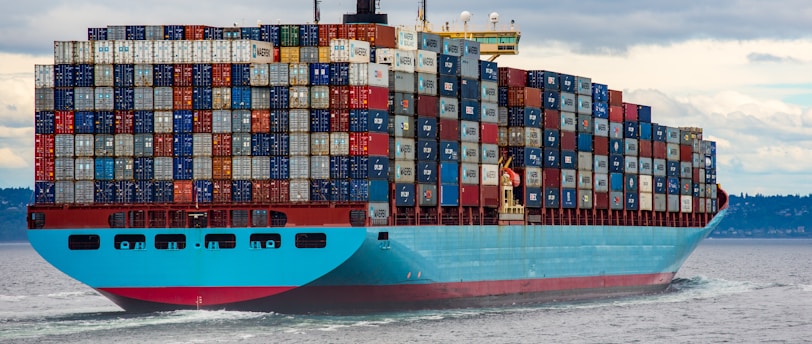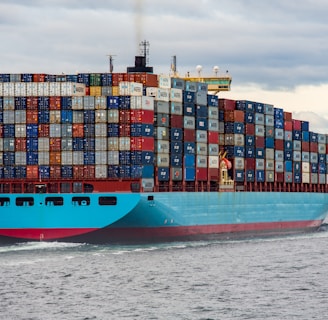Who wins a trade war
Competitive advantage and globalisation
Tushar Pradhan
4/4/20254 min read


The start of this month was as exciting as promised. Investors, regulators, politicians and global leaders were bracing for the much-awaited tariff proposals from the US Administration. The extent of the same as announced yesterday and the resultant impact has global markets in a tizzy. Are we now headed for a long period of uncertainty? Is volatility going to hound us for the next foreseeable period? A lot of such questions are being asked.
It is necessary to take a step back and assess what has really transpired. The US has unilaterally increased import tariffs at an unprecedented level, something not seen since the 1930s. We all know the reasons for the same – an assumption that other countries have an unfair advantage over the US while having higher tariff in their domestic countries for US goods and much lower rates of tariff for their goods into the US. While on the face of it this appears simple enough and maybe an electoral promise to satisfy, the truth, is far more complex.
Enter Competitive Advantage:
Economic theory points to the fact that there exists across individuals and among countries certain advantages that are not replicable. These could be inherent talent, access to key raw materials, technology or some such thing native to a place or people. This could become a “competitive advantage” for those who possess it as well as a source of efficiently manufactured goods for other countries that do not possess these advantages. In short a “win-win” situation. A more efficient use of scarce or limited resources, instead of replicating and burdening local resources in the manufacture of similar goods locally.
This is defined as competitive advantage[1]. Over time countries began to understand the economic advantage of this concept and started incorporating the same into trade flows. This led to a term liberally used as “globalization” to emerge and over the past few decades was the path that most economies took to optimize resource allocation, save valuable foreign reserves and excel in manufacturing that is competitive for that country or region. This is the basis for trade policy in general. However, when you have a complete “buy-in” to this theory, local manufacturing jobs will get exported as a logical outcome. Over time, this becomes a socio-economic issue that generates political dialogue.
More specifically for the US, that has moved so significantly in this direction, the reintroduction of tariffs is a hugely controversial, if not a potentially destabilizing move. The scale of disruption in supply chains and the resultant change in labor force composition is not easy to contemplate. It is akin to saying that “can we reverse outsourcing to in-house” in a services framework. For example “payroll” is the most basic activity outsourced by major companies all over the world. Can any company now “afford” to bring it back in house? What is the real cost and who suffers?
Holding on to anger is like grasping a hot coal with the intent of throwing it at someone else; you are the one who gets burned.
Buddha
While the object is to make other countries pay, it will be US consumers that will bear the brunt
Like this wonderful quote from the Buddha, anger directed to others harms us the most. Likewise, while the well-intentioned move to ask other countries to pay their fair share in the global trade stakes, by being the largest consumer of such goods in the world, the US will end up initially hurting itself the most. Local inflation will go up, as most tariffs will be passed on to consumers. Discretionary spending will reduce leading to lower demand, eventually leading to a recession. Interest rates will have to adjust lower to allow for the recession to not bite and this will lead to a weaker dollar.
A weaker dollar will cause even more pain for US consumers having to pay more in a weaker US dollar environment leading to even more inflation. It could spiral out if not corrected quickly. Trade wars in the past have a history of not ending well for anyone. Let alone for the largest consumer in the fray.
How to navigate markets in the current scenario
Longer term – this too shall pass, hence long-term allocation to equities as an asset class is not at risk even globally. Locally in India, an economy blessed with a domestic demand vector will not be directly impacted by the current turmoil, however sentiment will be a casualty in the near term. Long term capital flows along with supply chains are also to undergo some disruption and as a result uncertainty and volatility in local markets will be a feature for some time at least
However, toward the end of the year clarity is likely to emerge and we should see a more even outlook for risk assets compared to now. Earnings growth is expected to be robust in India and valuation largely on an average is reasonable. Pockets of overvaluations exist, and clearly in the current situation are at risk and should be reconsidered. However, for allocators into equity mutual funds with a proper financial plan need not change anything given the current turmoil.
More active equity investors will need to revisit their holdings in the light of current developments and the possibility of the weak sentiment going forward and its impact on stock prices.
“The best chance to deploy capital is when things are going down.”
Warren Buffett
[1] https://www.investopedia.com/terms/c/competitive_advantage.asp
